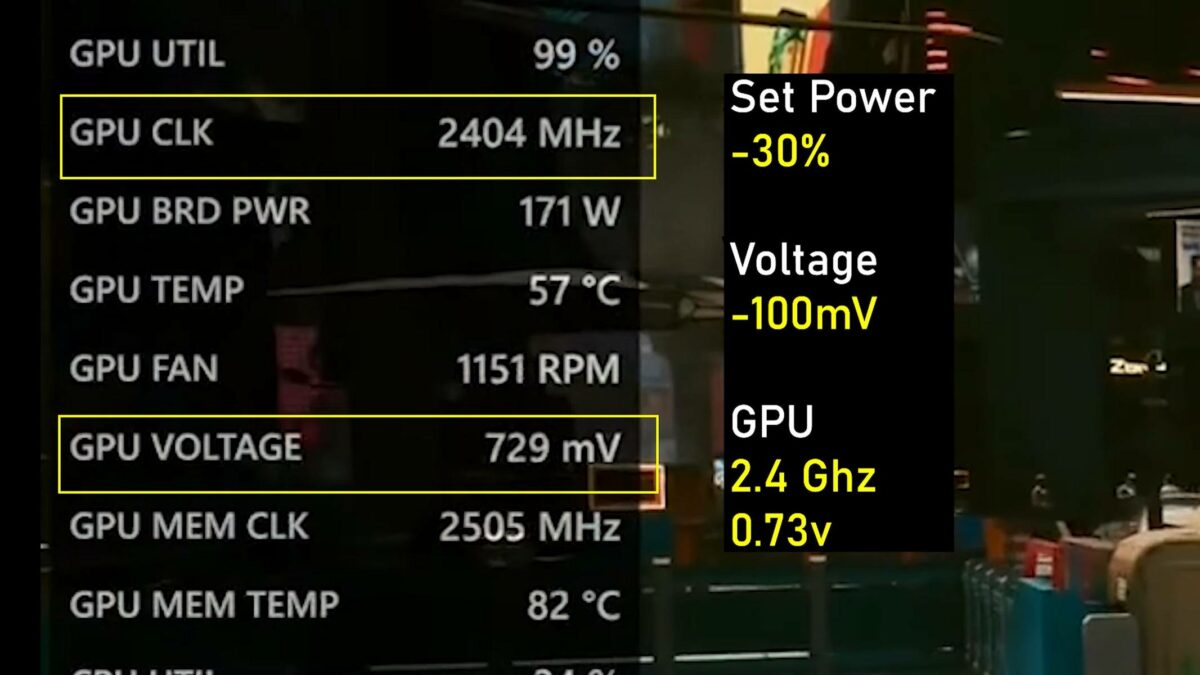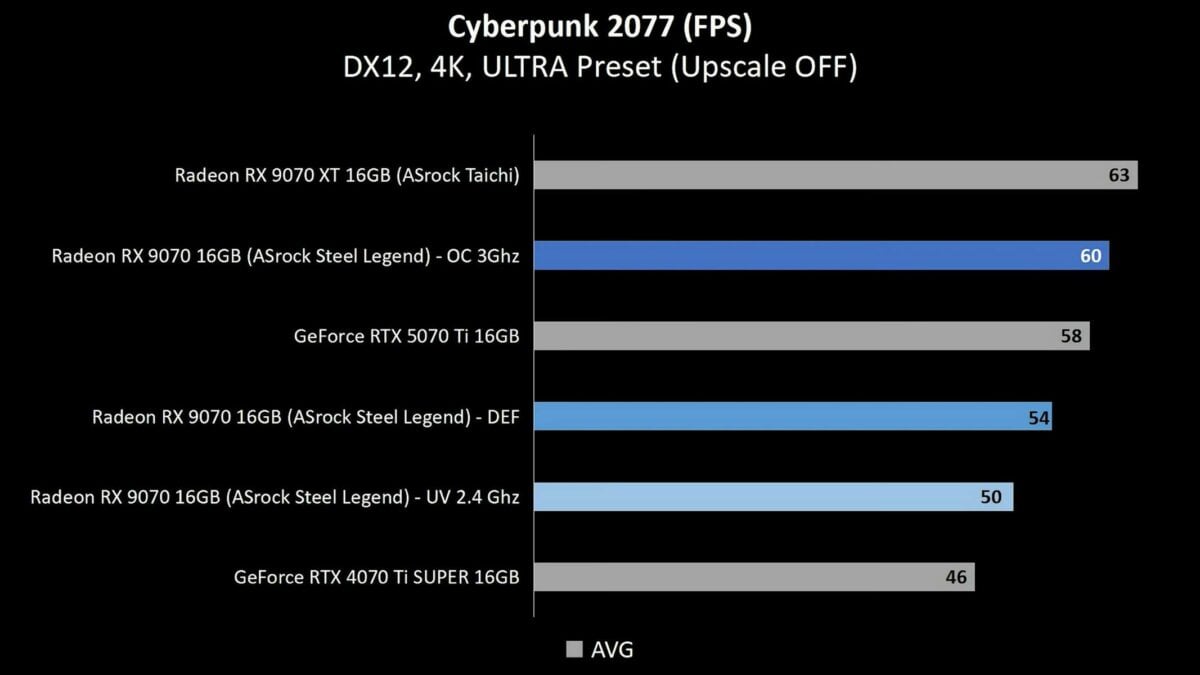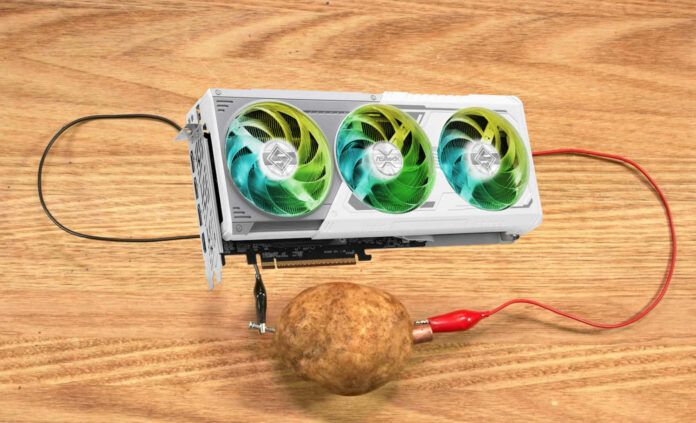AMD Radeon RX 9070 shows great results when undervolted, saving power without losing much performance. A win-win situation, reducing power consumption, GPU temperatures, and fan noise, all while prolonging the life of your hardware.
YouTuber Alva Jonathan took his ASRock Radeon RX 9070 Steel Legend graphics card through an undervolting adventure, showcasing the pros and cons of this procedure. The results are very encouraging as RX 9070 managed to retain 93% of its performance in Cyberpunk 2077 while targeting -30% power usage.
By default, the GPU was running at 2.6GHz and 0.88V which netted 54fps at 4K resolution. Sliding the power limit all the way down to -30% alongside -100mV on the Vcore reduced frequency to 2.4GHz. This resulted in 50fps at 171W – down from 244W, or a 32% boost in fps-per-watt. Even so, RX 9070 managed to stay ahead of the RTX 4070 Ti Super.

Going the other way around and giving the card more headroom with a +10% power limit while setting a -50mV offset boosted the frequency to 2.8GHz, delivering 58fps. Further tuning at -125mV Vcore pushed frequency to 3GHz, resulting in 60fps or an 11% increase over default. I don’t know about you, but I’d rather trade 7% of performance or in this case 4fps to save power and have a cool and silent graphics card.

Generally speaking, the higher you push frequencies, the worse power scaling becomes. It’s not always a linear 5% trade-off for a 5% boost, sometimes demanding more power than the performance increase you get. Conversely, reducing power consumption results in lower temperatures, which in turn eases power leakage and offers better performance per watt.
If you don’t mind losing a couple of fps, undevolting is a great option to have a silent machine all while potentially increasing its longevity by ensuring the chips don’t get worn out by high temperatures.


